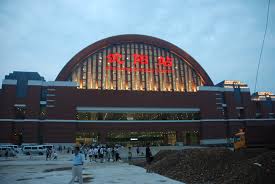Shenyang, a city that is present in the Northeast part of China. It is the capital of China and the largest city in the Liaoning Province. The city which was formerly romanized by Mukden is a very important industrial centre in China and is the major transportation as well as commercial hub to the locations of China’s northeast, Japan, Russia and Korea. The city has a very diversified industrial sector and abundant resources and workforce. Shenyang is also known for having many tourist attractions owing to its history with the Manchu and Qing Dynasties. Some of the well-known tourist spots in the city include:
Mukden Palace:
The Mukden Palace also known as the Shenyang Imperial Palace. It was one of the houses of Qing Dynasty, when they were in the power of China. Built in 1625, three Qing Emperors stayed there until 1644 and once the monarchy was ended, the Palace has been converted into a museum and a tourist attraction. The Palace was built to resemble the Forbidden City in Beijing. The Dazheng Hall is one of the earliest constructions in the building. The Palace is now a UNESCO World Heritage Site and is visited by thousands of Chinese tourists every year.
Fuling Tomb:
Another major tourist attraction in Shenyang is the Fuling Tomb, also known as the East Tomb. It served as one of the main sites for ritual ceremonies during the Qing Dynasty. It is also a UNESCO World Heritage Site. It contains a very vast and spread out architectural complex, that is made up of a stone archway, a main red gate, stone animals, cloud pillars and many other artifacts that have been constituted. It is an important tourist attraction in China.
Liaoning Provincial Museum:
This museum is an important history and fine arts museum, that is located in Shenyang. It contains some of the rare pieces of art and other idols known to the history of mankind. Some of its collections include the Dawn of Chinese Culture Gallery, the Northern Shang and Zhou Period, which has bronze tools and weapons as well as the Bei Shan Tang Tablet Gallery, which contain Chinese steles.
